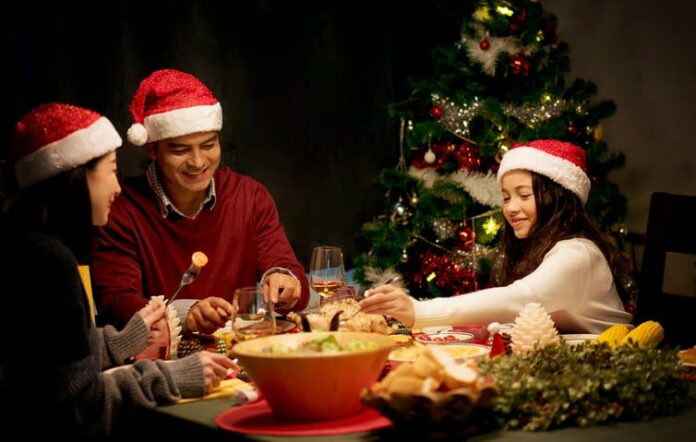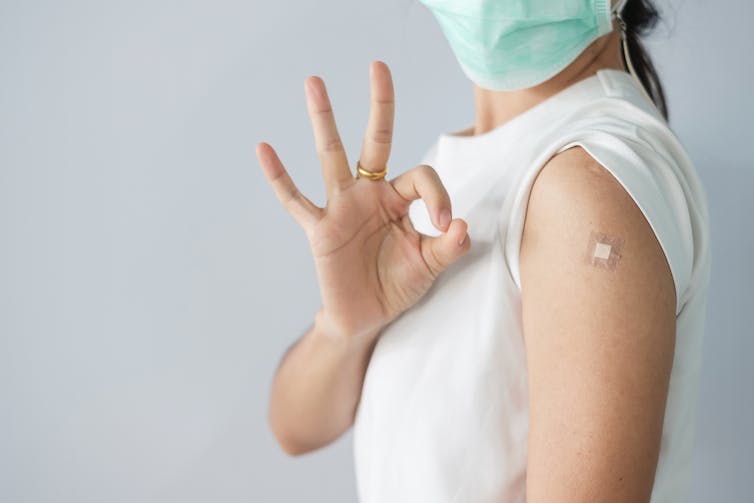
By Simon Nicholas Williams, Swansea University
This autumn the UK has had between 30,000 and 50,000 new COVID cases each day, and globally cases are rising again after months of steady decline – so much so that many countries are reintroducing measures to curb the virus. Austria is back in lockdown, with other European countries considering similar measures.
So like last year, this promises to be a winter of discontent. In Northern Ireland the government is again recommending people work from home, while England’s winter plan notes that mask wearing, working from home and vaccine passports could be introduced. The government has refused to rule out deploying stronger measures if needed, too.
But if we want to avoid the frustrations of last Christmas, there’s much we can do voluntarily to try to keep us out of lockdown. As we prepare for the festive season, here are four ways we can help contain the virus over the winter, prevent cases spiralling out of control, and keep us and those around us safe.
Vaccines, vaccines, vaccines
First jabs, second jabs, booster jabs – these should be at the top of everyone’s Christmas list. We know vaccines work both at reducing the severity of COVID and at reducing its transmission. A recent study from England shows that if you catch COVID, having had both vaccine doses lowers the risk of transmitting it within your household by approximately 27%.
Those who are yet to be vaccinated, or those who are yet to have their second dose – for example most 16-to-17-year-olds, who are now able to get theirs – should do so to make socialising, particularly with vulnerable family or friends, safer this Christmas.

And don’t forget your flu jab. Many of us are underexposed to flu viruses because of the last 18 months of lockdowns and social distancing, and so risk getting more ill than usual if we get the flu this winter. Research also suggests that catching flu when you already have COVID doubles the risk of death. Minimising flu cases will also lower the risk that the NHS is overwhelmed, which would be a key reason for reintroducing stricter measures.
Hibernation – it isn’t just for squirrels
A little bit of voluntary pre-Christmas hibernation wouldn’t be a bad idea either. After getting vaccinated, the single most important thing we can do over the next couple of months is cut down our contact with others.
When it comes to mixing, less is more. If we all made little adjustments, even just a few fewer close contacts per week, this would add up to making a big difference to viral transmission.
What might this look like in practice? Maybe we keep the office Christmas party but ditch the office – for now. Evidence suggests that those who go into work have on average twice as many close contacts as those who don’t. Telling people to work from home can therefore help to reduce contacts.
Data suggests that the number of us working fully from home is less than half what it was last winter, so there’s the potential to significantly reduce the total amount of contact currently taking place. Of course, working from home is easier for some than others, and the government and employers also need to play their part to make flexible working more commonplace.
Beyond the workplace, we can limit our contacts by going on a pre-Christmas social diet – perhaps by going to just one or two parties instead of many. Having a quiet December will help ensure not only that we can enjoy the Christmas relatively free of any restrictions, but also that in spring 2022 we can start to make up for lost socialising.

Getting a smaller turkey
This may feel like a hard one, having skipped last Christmas, but big festive gatherings should be saved for 2022. That doesn’t mean the turkey has to be as small as last year – but perhaps smaller than usual.
Research has shown how restrictions on the number of people who can meet indoors, like the “rule of six”, are another effective way of reducing our number of contacts and so limiting the virus’s transmission.
Of course, no one wants to see the return of these kinds of rules, so perhaps voluntarily keeping gatherings a little bit smaller this year might mean we won’t need them, particularly in the weeks immediately following Christmas.
Increasing ventilation
Socks and woolly sweaters are normally a stocking-filler or last-minute purchase, but these are actually really good presents this year. We need to take ventilation seriously. Because of the airborne nature of the virus, increasing air circulation is another way of lowering transmission at home or in the office.
But this is easier said than done when temperatures drop. Few homes have mechanical ventilation, and in many workplaces and public venues it is inadequate. The good news is that the colder the temperature outside, the better the air flow and therefore the smaller the opening we need – so even cracking a window just a little bit on cold or windy days is better than keeping it closed.
So dressing warmly to get fresh air without freezing – whether by keeping windows open (for at least ten minutes per hour) at home or by spending more time in outdoor covered areas – can really help reduce the risk of transmission.
If we all take these relatively small but very significant steps to reduce our and others’ risk this winter, together we really can help to take pressure off the NHS, avoid the need for the kinds of restrictions we are seeing in other countries and, most importantly, save lives and ill health in the process. Without them, we risk a repeat of last year – and beginning 2022 with big limits on what we can do.
Simon Nicholas Williams, Senior Lecturer in People and Organisation, Swansea University
This article is republished from The Conversation under a Creative Commons license. Read the original article.



